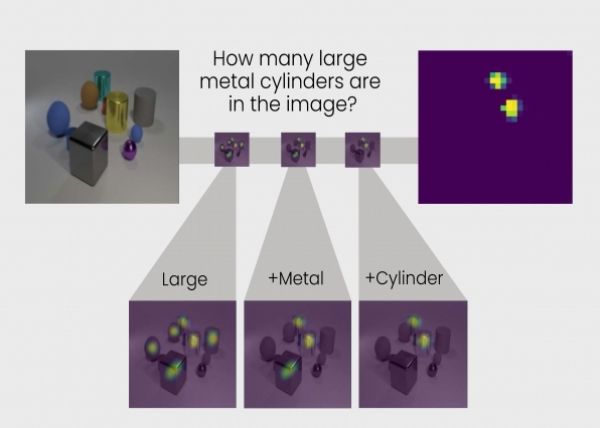A child is presented with a picture of various shapes and is asked to find the big red circle. To come to the answer, she goes through a few steps of reasoning: First, find all the big things; next, find the big things that are red; and finally, pick out the big red thing that’s a circle.
We learn through reason how to interpret the world. So, too, do neural networks. Now a team of researchers from MIT Lincoln Laboratory's Intelligence and Decision Technologies Group has developed a neural network that performs human-like reasoning steps to answer questions about the contents of images. Named the Transparency by Design Network (TbD-net), the model visually renders its thought process as it solves problems, allowing human analysts to interpret its decision-making process. The model performs better than today’s best visual-reasoning neural networks.
Understanding how a neural network comes to its decisions has been a long-standing challenge for artificial intelligence (AI) researchers. As the neural part of their name suggests, neural networks are brain-inspired AI systems intended to replicate the way that humans learn. They consist of input and output layers, and layers in between that transform the input into the correct output. Some deep neural networks have grown so complex that it’s practically impossible to follow this transformation process. That's why they are referred to as "black box” systems, with their exact goings-on inside opaque even to the engineers who build them.
Read more at Massachusetts Institute of Technology
Image: TbD-net solves the visual reasoning problem by breaking it down to a chain of subtasks. The answer to each subtask is shown in heat maps highlighting the objects of interest, allowing analysts to see the network's thought process.
Illustration courtesy of the Intelligence and Decision Technologies Group


